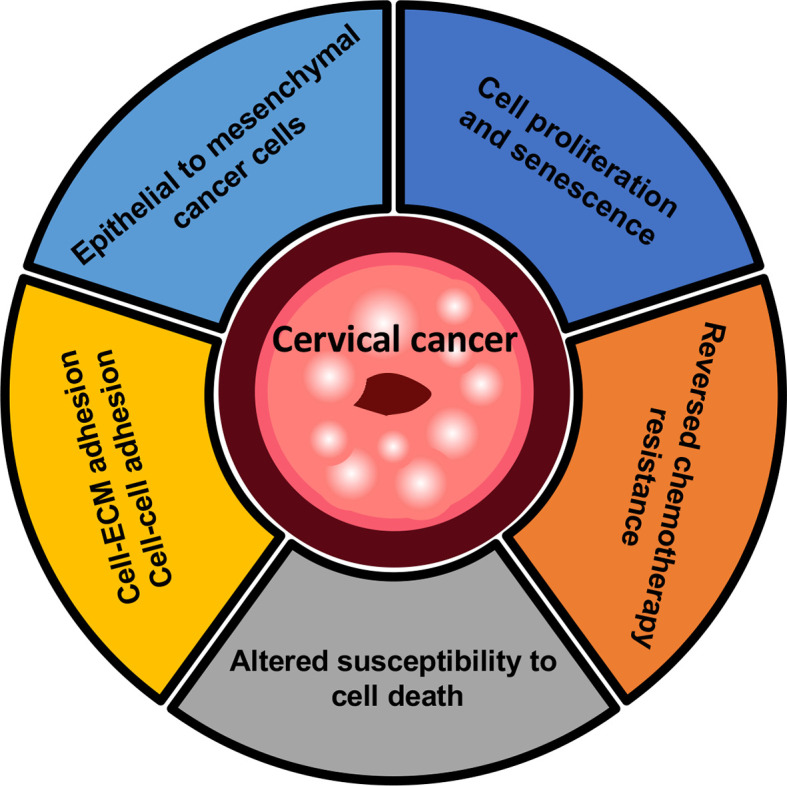Figure 3.

Overview of mechanisms in cervical cancer. Cervical cancer cells have been proposed to permit rapid proliferation and activate an epithelial-mesenchymal transition (EMT) program. Cell-ECM or cell-cell adhesion which are known to occur during metastatic tumors, and lead to the subsequent changes in the crosstalk of cancer cells with neighboring microenvironment. In the context of cell death, the inhibition of glycan-processing enzymes provides the potential strategy of chemotherapy drugs with drug-resistant cervical cancer, notably involving the regulation of apoptosis during platinum-based chemotherapy.
